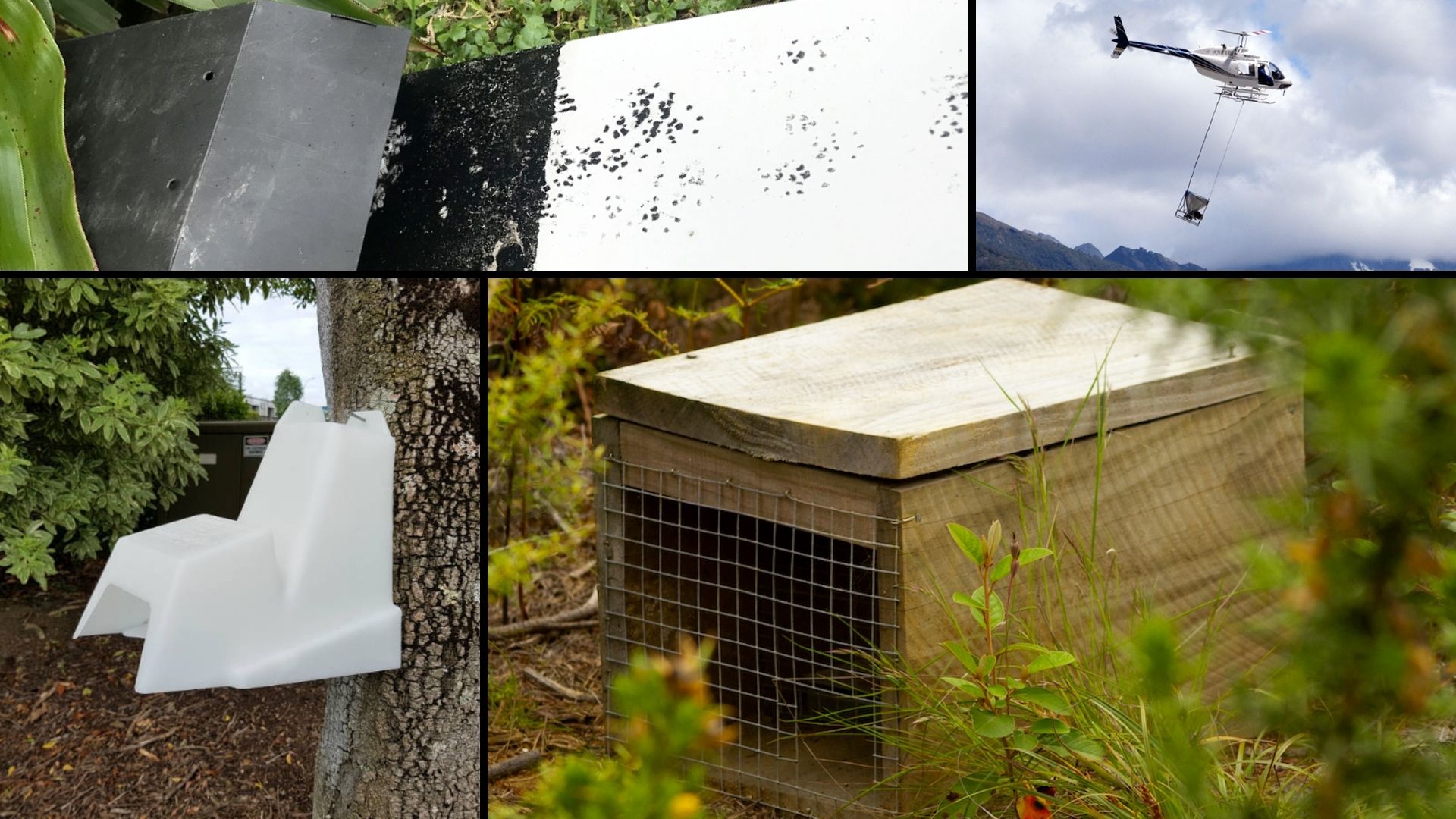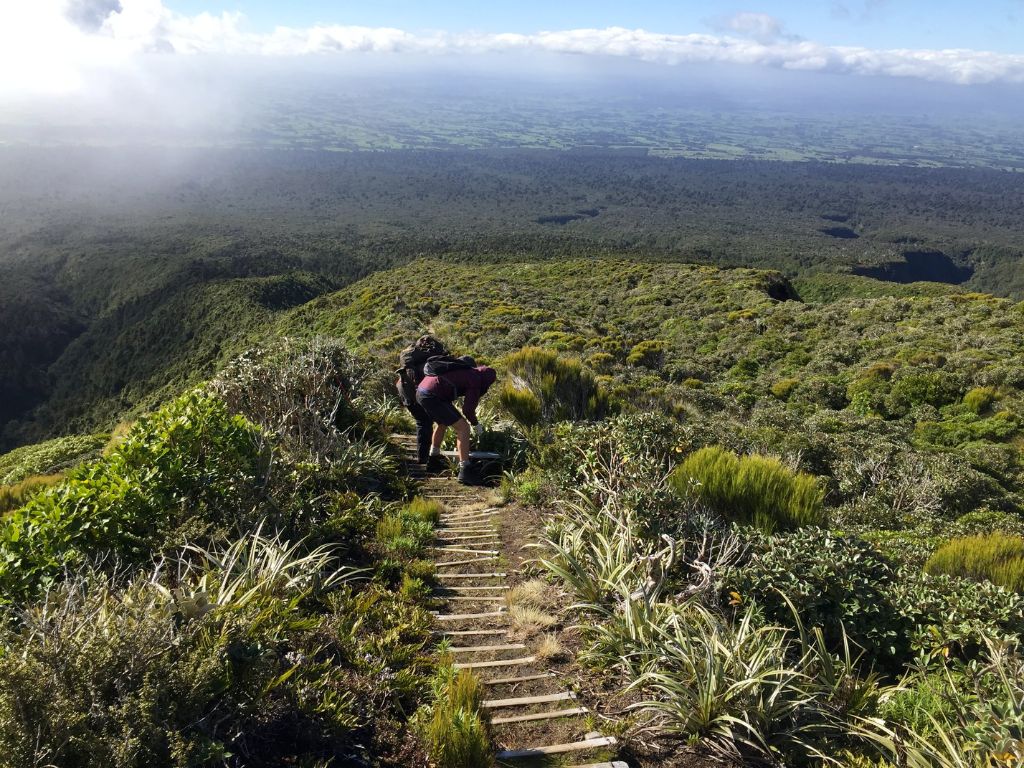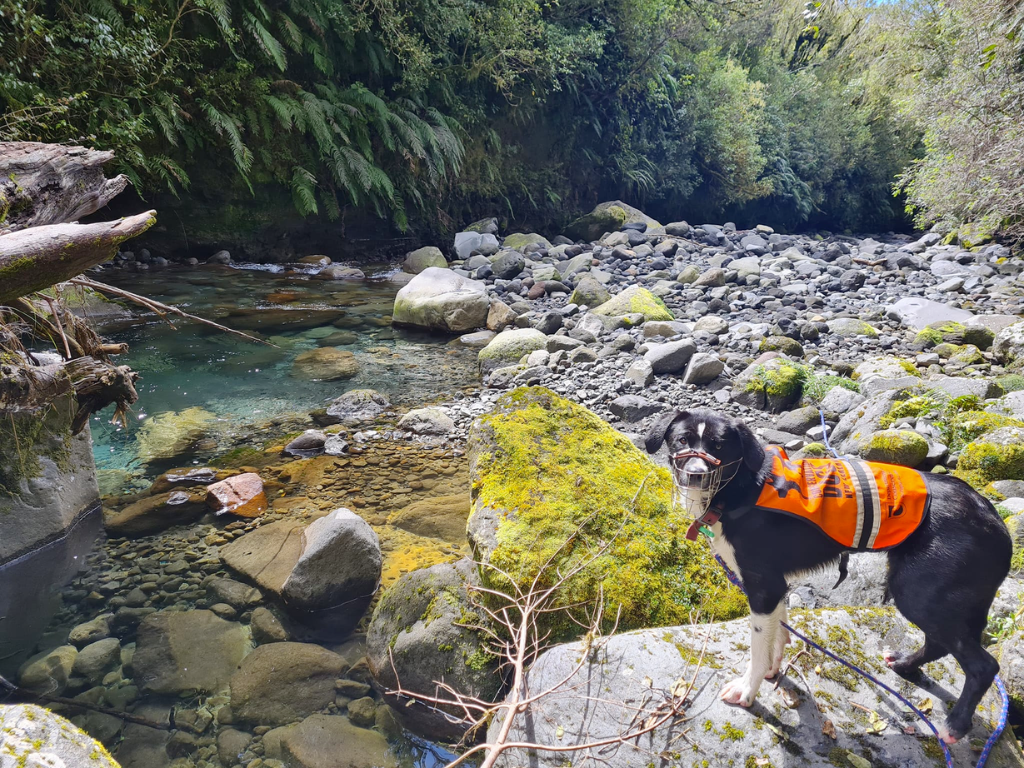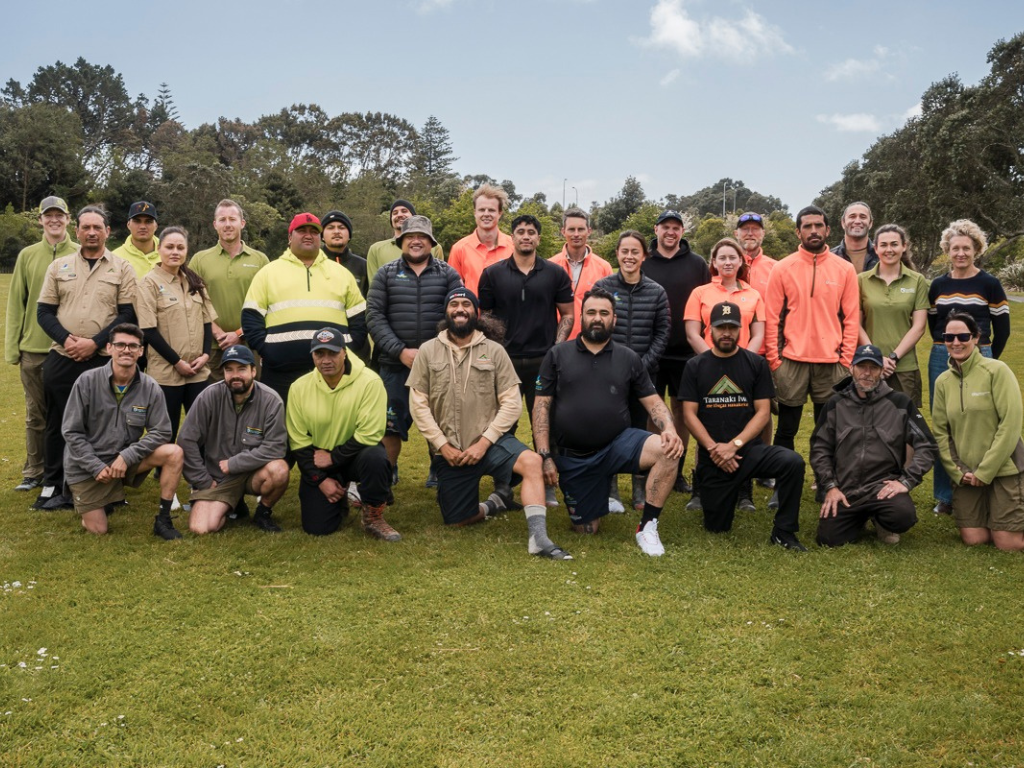An intricate web of ecological, technological, and logistical challenges makes it clear that, much like the Fellowship in Middle-Earth, a diverse range of tools and skills is required.

To protect 34,000 hectares from mountain to sea the Taranaki Mounga conservation project uses every available tool.
Getting it right can potentially improve the fortunes of native species which call the area home, such as the kiwi-nui (brown kiwi), whio, tūī, korimako (bellbird), and pīhoihoi (pipit).
Meeting this seemingly Herculean task takes an equally ambitious and plucky effort – and a bit of hunter’s intuition. Trapping predators successfully across a vast and expansive area around the size of Palmerston North isn’t an exact science.
And after seven years of experience, one thing project co-director Sean Zieltjes is sure of is there’s no off-the-shelf solution for what the project is trying to achieve.
“We’re pretty well using every tool available to us from aerial 1080 to leg hold trapping systems, through to some of the real tried and true traps like DOC200s and hunting with dogs.
“It’s been a case of how you get all those tools to work together with one another across the landscape, which has been a big part of the challenge.”

To make the most of the tools at their disposal, knowledge of the land and animal behaviour helps narrow down the likely areas to focus on and what techniques are best suited to the job.

Scat detection and a network of cameras also enhance the guesswork to keep tabs on the possum population. Together, these clues build a picture of where the possums might be, where they’re coming from, and even who they are.
“In September last year, most of the animals caught within that block were juvenile males, which tells us we’ve got the resident population under control. It’s just those young males that have been kicked off mum and trying to find their way in the world coming into the area,” Sean says.
Signs of success
Because there is no blueprint, Sean says the team has built a culture of testing, learning, open communication, and a willingness to try.
“It’s been less about workshops and more about empowering the team to make good decisions or to understand what they’re looking at, back themselves, and just give it a crack.”
And it’s starting to pay off. Goats are now functionally extinct in Egmont National Park, more than 18,000 hectares of the national park are protected by stoat traplines, and rat and possum numbers remain low following 1080 operations.
Staff and volunteers have also seen and heard the results of their work first-hand.
“Some of the eureka moments in the program have been when some of our volunteers on the Kaitake Range see whio turn up in the river that they’ve been walking up for the last eight years for the first time.
“It just gives you the shot in the arm. It just tells you’re on the right track,” Sean says.
Around 30 brown kiwi were released in the Kaitake Range; something made possible due to trapping.

Echoes of the past or a glance into the future
Sean believes the project’s ultimate success relies on different sectors of the community being invested in the cause and working toward a shared goal.
Consensus building has become just as important as deciding which type of trap to use, but it can take time and understanding.
“It’s about moving at the speed of trust.
“The community isn’t here to help us to deliver it. We’re there to support the community to deliver it, which is probably a subtle but important way we view our role.”
For Sean, New Zealand has no choice but to achieve its ambition of becoming predator free. With so much at stake, he believes everything needs to be done to return our native species to their former glory.
“If we don’t take action, the potential we see for New Zealand within fenced sanctuaries won’t become a reality.” Our mindset is that they’re not relics of the past, but a bit of a crystal ball into what the future could be like – little glimpses into what abundance could look like.
Taranaki Mounga is a partnership and collaboration between the Department of Conservation, Taranaki Iwi Chairs Forum, NEXT Foundation and Toi Foundation.

